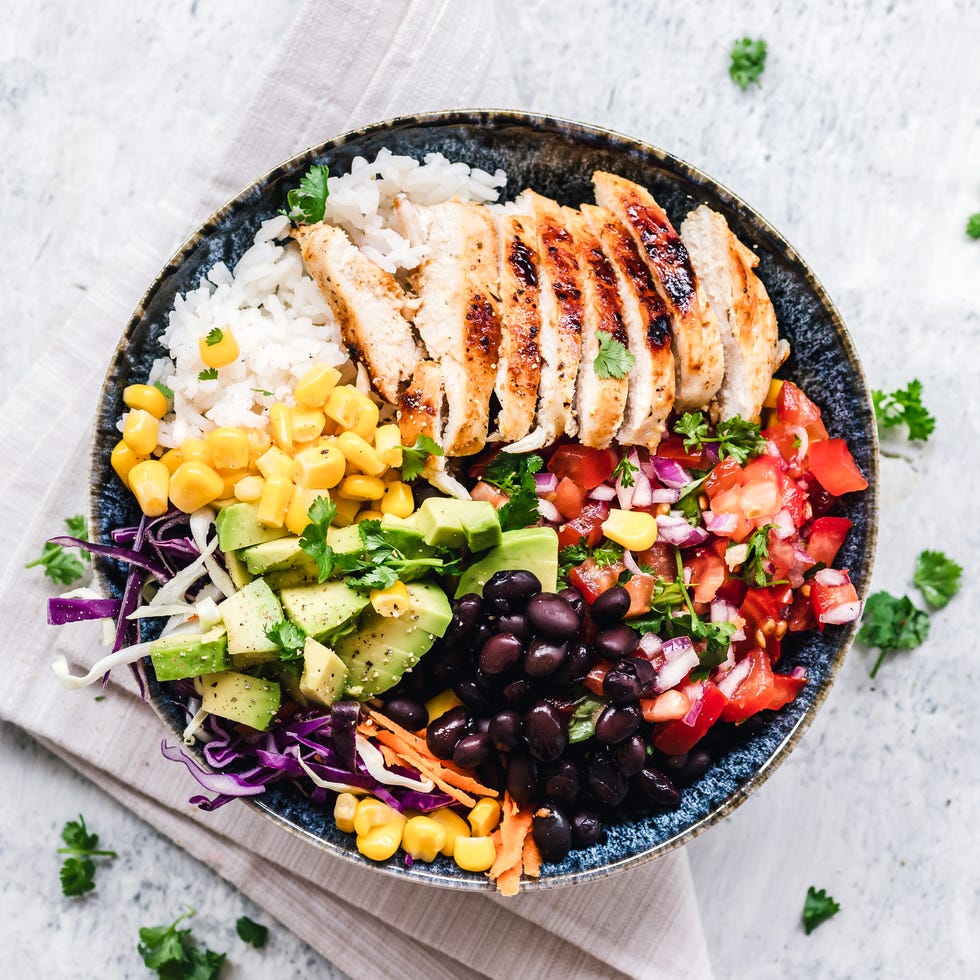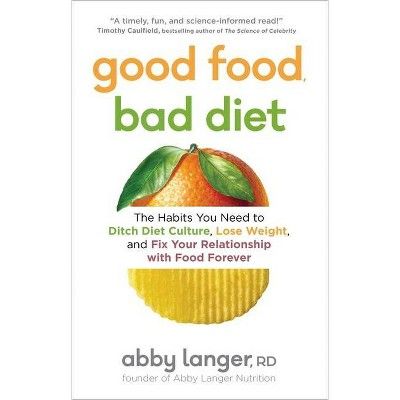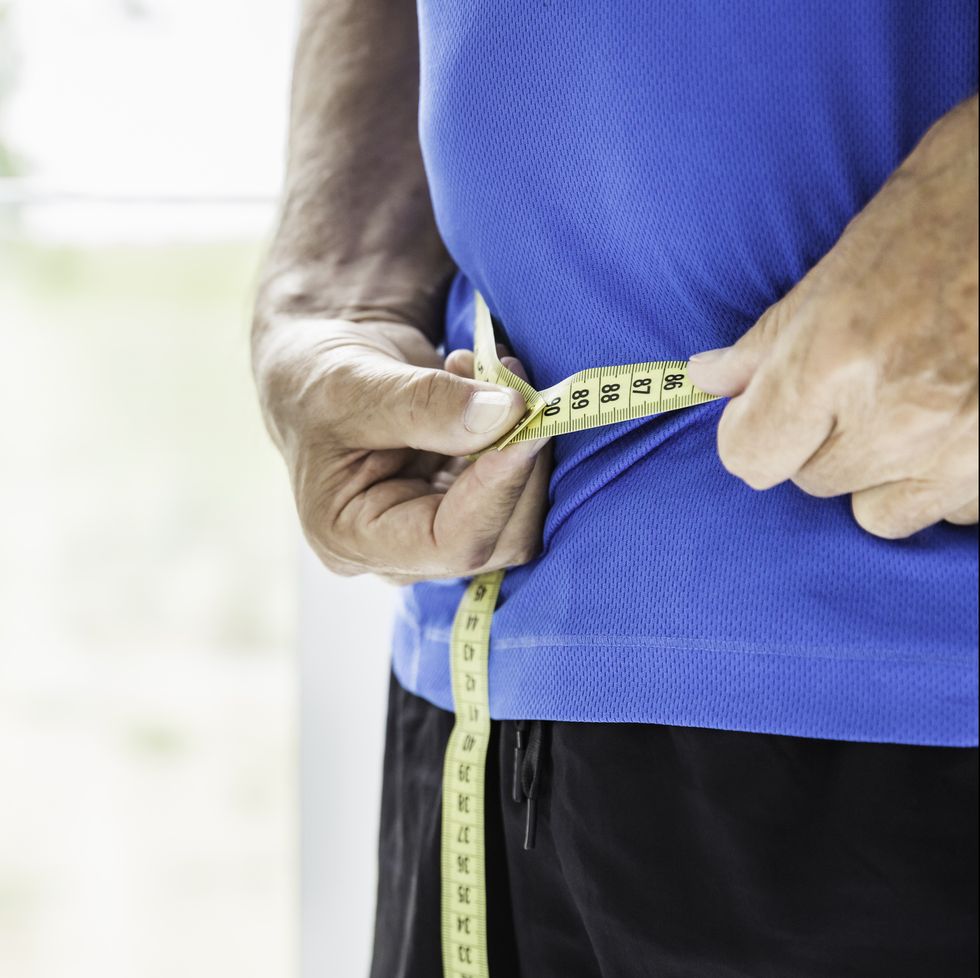THE DIETING CONCEPT of ‘calories in, calories out,’ is nothing new—but its new moniker, ‘CICO’ is.
“Most people are acquainted with traditional weight-loss plans based on the premise of creating a calorie deficit—eating fewer calories than your body needs so that your body will utilize fat stores for energy,” explains Mindy Haar, Ph.D., R.D.N.,and assistant dean at New York Institute of Technology’s School of Health Professions.
But before you jump on the CICO bandwagon, it’s important to understand a few key elements of how your metabolism and your body works when it comes to dieting and weight loss. Indeed, there’s both a healthy and unhealthy way to do CICO. Here’s what you should consider before you adopt the CICO approach to losing weight.
What is the CICO diet?
The growing diet trend, of CICO, puts the calorie-counting method of weight loss front and center.
The CICO plan operates under the premise that you’ll lose weight by consuming fewer calories than your body uses to perform its daily functions.
There’s no way this popular diet is as simple as counting calories, right?
“The idea of calories in and calories out is absolutely the backbone of weight loss,” says Bethany Doerfler, M.S., R.D.N., Clinical Dietitian at Northwestern University. “But metabolism and weight loss are so much more complex than that.”
Thankfully, putting the CICO M.O. into action is a lot simpler than understanding the science behind weight loss and your metabolism. “There’s no real plan with CICO,” says Dezi Abeyta, R.D.N., a Men’s Health nutrition advisor and author of The Lose Your Gut Guide.
And that’s actually not a bad thing.
On CICO you just consume fewer calories (calories in, or “CI”) than you burn (calories out, or “CO”) every day. And, honestly, any diet—be it keto, paleo, Whole30, or otherwise—can be a complicated method for consuming fewer calories than you burn. CICO attempts to simplify everything.

OatmealStories//Getty Images
That said, let’s complicate things just a bit so that you can understand the mechanism by which CICO argues that it works.
Basal metabolic rate (BMR) is the amount of calories your body burns to stay alive. This figure is individual specific and determined by a number of factors including height, weight, and age. Online calculators offer an estimate, and some doctors use breathing machines that deliver more precise and customized BMRs.
Then lifestyle factors like physical activity need to be accounted for since you’re probably not lying in bed all day. Again, online calculators and formulas offer rough estimates of how many calories your body uses.
Losing weight requires eating fewer calories than your body needs to maintain its activity level. Here’s where CICO comes in.
On the CICO diet you track how many calories you consume daily by way of the aforementioned calculators and then you try to eat fewer calories a day.
So, let’s say that you figure out your calorie need for the day is 2,600 calories. You could then aim to eat 2,200 calories daily in an attempt to lose weight.
Run a calorie deficit and you’ll start to drop pounds.
And, really, there are no off-limit foods as long as you stay under that calorie threshold for the day.
“Everything is on the table,” says Abeyta. “So if you wanted to drink beer and eat wings every day, you could—as long as you either consumed less of those things or exercised more to maintain a calorie deficit.” Is that a good way to approach CICO in terms of building long-term health? Absolutely not.
So the premise of CICO is rooted in simplicity, but the actual execution of the CICO diet can be challenging. Calorie counting requires meticulous tracking, which can be especially hard to do when dining out or if you’re traveling.
Plus, math.
But people have seen results on the diet.
Does the CICO diet work?
It depends what you mean by “work.”
It’s generally accepted that most diets work because of a calorie deficit, says Abby Langer, R.D. So if we’re talking about the CICO diet and short-term weight loss, sure, it can work.
“However, calories as we know them are so arbitrary,” Langer says. “The calorie was invented a really long time ago and isn’t necessarily accurate in terms of how our bodies metabolize each individual food. We’re learning so much more about how calories are absorbed.”
Your body takes in more calories from food that’s been processed, or broken down from its natural form, she explains. “So if you have a smoothie you’re going to absorb a significant portion of those calories compared to if you eat that food raw or cooked,” says Langer.
Good Food, Bad Diet

Emerging research shows your body handles ultra-processed items like chips or Twinkies differently than kale or bananas. “Those [packaged snacks] are going to be viewed very differently on a cellular level,” says Bethany Doerfler, M.S., R.D.N., Clinical Dietitian at Northwestern University.
The National Institute of Health found that ghrelin, a hormone that drives hunger, is higher when people consume ultra-processed foods compared to after eating a well-balanced diet, according to 2019 research published in Cell Metabolism.
Heavily-processed foods high in sugar, fat, and salt, may spike insulin levels and cause your body to store more fat, explains Doerfler.
Then, you have to consider the benefits of a fiber.
“Fiber-rich foods provide a certain level of satiety and fullness,” says Doerfler. The nutrient also promotes healthy gut bacteria, which scientists believe may determine a person’s weight.
“By laser-focusing on calories, you may forget about filling fiber, muscle-building protein, and disease-fighting micronutrients,” says Abeyta.
It’s great to know how many calories you eat daily, in general. “If you’re self-motivated and know that a good diet includes lean proteins, colorful produce, quality fats, and fiber-rich carbs, well, then CICO can help you lose weight and improve your health,” Abeyta says.
But if your diet is still rich in junk food—even if you’re eating less of it and you’re losing weight—you’re not not eating a diet that sets you up for long-term health.
Benefits of a CICO diet
For some who choose to practice it, the CICO diet can help you lose weight and improve your health, as you can include more nutrient-dense, fiber-rich foods into your meals without breaking the calorie bank.
“The main benefit of the CICO diet is its simplicity and flexibility, and as long as you stick to your calories, you can eat whatever you want,” says Ana Reisdorf, M.S., a registered dietitian and founder of The Food Trends. “Consistent calorie-tracking can lead to effective weight loss, as it raises awareness of portion sizes and food choices.”
But it’s not just the ‘CI’ or calories in aspect of this plan that helps you. The ‘CO’ or calories out component of this lifestyle matters, too. “Exploring a CICO-based plan leads you to first consider how many calories you are expending each day and how that can be increased,” explains Haar.
Your total expenditure is based on basal metabolic rate (how many calories you use when at rest for basic functions that include breathing, maintaining body temperature, brain and nerve functions) plus energy used for digestion and physical activity.
“While age, gender, height and genetics are influential factors that can’t be modified, the amount of muscle mass you have increases caloric needs even when resting and increasing all types of exercise adds to calorie expenditure as well,” says Haar. “Aside from weight loss, increase in aerobic capability and strength training has a plethora of other health benefits.”
Downsides of a CICO diet
No diet is a one-size-fits-all solution. CICO is no exception, and it certainly isn’t for everyone. As always, talk with your primary care physician or a trusted healthcare practitioner before embarking on any new lifestyle and diet routine to make sure it’s safe for you.
Haar perceives the major flaw with the CICO diet that in focusing on calorie numbers alone in an effort to lose a substantial amount of weight fast, individuals may reduce calories to unhealthful levels where they are not getting adequate nutrients.
“While the scale may show big losses, the pounds lost may have resulted from dangerous water loss, as well as a breakdown of muscle tissue,” says Haar. Gradual weight loss of one-to-two pounds per week is more healthful and likely to be sustained. The most important factor in weight management is that any lifestyle changes you make should be permanent. “Any diet pattern that is followed temporarily can result in significant weight loss, but this loss is rarely sustained.”
In addition, Haar warns that it’s possible to eat just the right number of calories to sustain a one-to-two pound/week weight loss, but the food pattern consists of ultra-processed, low-fiber foods contributing to other health situations. “Thus, food quality, not just quantity, is important to consider,” she says.
Riffing on that sentiment, Residorf says that focusing solely on calories can lead to poor food choices, as not all calories are nutritionally equal. Of course, “300 calories from a doughnut versus 300 from lean chicken and vegetables will have vastly different effects on the body,” she says. This approach that can lead to nutritional deficiencies and an unbalanced diet.
“The emphasis on calories rather than food quality might also encourage eating low-calorie yet nutrient-poor processed foods, which can make you hungrier so it is hard to stick with the calorie restriction,” she says.
Is a CICO diet healthy?
We’ve talked about this a little already from a physical standpoint, but it’s also important to talk about diet from a mental perspective.
Counting calories isn’t inherently problematic, says Doerfler. But there are exceptions.

Matelly
“I like that this diet has brought back to the forefront looking at calories and seeing where your high-calorie food comes from,” she says. “Almost all the time those calories come in the form of refined snack foods and sugar-sweetened beverages. The hope is that those calories would be used for smarter and healthier eating.”
Realizing that morning bagel with cream cheese tops more than 600 calories could inspire you to choose a satisfying meal that contains fewer calories, like oatmeal and peanut butter.
Plus, apps like MyFitnessPal are useful ways to monitor what you’re eating. People who spent just 15 minutes a day logging food lost about 10 percent of their body weight in one month, according to a 2019 study published in the journal Obesity.
That said, counting calories can feel like a chore, lead to obsessive behavior, and even spark binge eating, says Langer.
“When you’re drilling everything down to numbers it takes away all the joy of food and disconnects us from nourishing our bodies,” she asserts. “This perpetuates diet culture by being punishing.”
Stressing over numbers can be a trigger to binge for people with eating disorders. If you have a history of disordered eating, consult a dietitian who can customize a plan that works for you.
“If you ever find yourself ‘running off’ indulgences or skipping meals for the sake of CICO, that’s a signal flare,” says Abeyta.
And strict diets don’t take birthdays—or any other celebratory meal, really—into consideration.
“People are not quite so robotic,” says Doerfler. “Even if someone needs 1,200 calories a day to lose weight, most people are not adhering to that 100 percent of the time.”
Ultimately, the best diet is one that doesn’t consume your every thought. Dieting becomes an issue when you refuse to eat even though you’re hungry, says Langer.
“If you have to pee you wouldn’t say, ‘No, I can’t pee for another three hours,'” she asserts.
Langer recommends listening to your body’s natural hunger cues and taking a more relaxed approach.
“Stop thinking of food as good or bad and just eat,” she says.
>>> Read full article>>>
Copyright for syndicated content belongs to the linked Source : Men’s Health – https://www.menshealth.com/nutrition/a28493677/what-is-cico-diet/































